If you’re wondering how to write a children’s book that readers will love, you’re not alone. One of the questions I get most from children’s writers is: “How do I know if my book is good?”
You can be given all of the logistical steps, from A to Z, on how to publish a children’s book, but it doesn’t mean your final product is high quality.
Maybe you follow the steps: write a story that’s 700 words or less, get it to fit on 28 pages, have a child-hero, decent illustrations, and you finally hit publish.
Then crickets.
Crickets, in this case, can represent two major problems:
- You didn’t have a strong launch or market your book well.
- It’s just not that great of a book.
So how can you be sure that your book is the kind that readers will love?
In this article, we will go over the steps to get started writing a high-quality children’s book that readers will love, no matter if you self-publish or traditionally publish. These are tips we use to help authors write great children’s books, and are some of the tips from our Children’s Book School program.
What makes a children’s book good?
If you’re learning how to write a children’s book, you need to start by defining the qualities of a good children’s book.
According to the Caldecott Medal, the much esteemed award for the most “distinguished American picture book for children,” a quality picture book is:
“…one that essentially provides the child with a visual experience. A picture book has a collective unity of story-line, theme, or concept, developed through the series of pictures of which the book is comprised… The book displays respect for children’s understandings, abilities, and appreciations.”
I would add that “quality” children’s books also have the following elements:
- They provide an emotional or thought-provoking experience for the reader
- They include multiple layers of meaning
- They don’t patronize children or “dumb-down” the content
- They provide new insights, allow for a variety of responses, and challenge the reader’s thinking and feelings
- They appeal to children and the “child” within their adults
- They have a great “Read it Again!” quality
- They display a perfect symbiosis of storytelling with the art and text
How to write a children’s book in 8 steps
Now that we have an idea of what makes a children’s book “good,” it’s time to learn how to write a children’s book that incorporates the essential elements we identified above.
By starting with these basics, you’ll start creating a solid foundation that builds up to a quality book for kids that will be enjoyed for years to come.
Are you ready to get started?
Step 1: Read children’s books
Learning how to write a children’s book begins with reading many children’s books, through the eyes of an aspiring author.
Related: How to Become an Author
One of my favorite quotes on the craft of writing for children is from Stephen King. I know, right? Actually, Stephen King has also written a book for children!
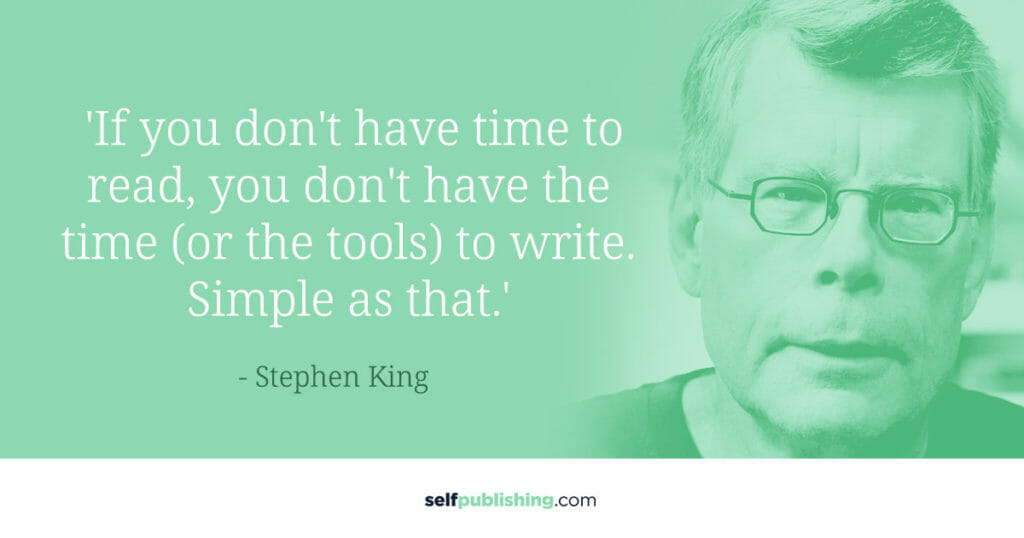
He says, “If you don’t have time to read, you don’t have the time (or the tools) to write.”
You have to read every children’s book you can get your hands on in order to know what’s selling, identify the qualities of great storytelling, and engaging with content you want to master.
You can develop the art of storytelling for children for free just by spending time at your local library reading.
Here’s why you should read children’s books if you want to be a children’s book author:
- Familiarize yourself with what’s selling
- Understand how great stories handle storytelling, pacing, use of illustration in storytelling, character development, and all the rest
- Learn hands-on by personally engaging the content you hope to master.
Popular children’s books to learn from
Board Books / Early Childhood (Ages 0–3)
- Goodnight Moon by Margaret Wise Brown, illustrated by Clement Hurd
- The Very Hungry Caterpillar by Eric Carle
- Brown Bear, Brown Bear, What Do You See? by Bill Martin Jr. and Eric Carle
- Where’s Spot? by Eric Hill
Picture Books (Ages 3–7)
- Where the Wild Things Are by Maurice Sendak
- The Snowy Day by Ezra Jack Keats
- Don’t Let the Pigeon Drive the Bus! by Mo Willems
- The Gruffalo by Julia Donaldson, illustrated by Axel Scheffler
- Chicka Chicka Boom Boom by Bill Martin Jr. and John Archambault, illustrated by Lois Ehlert
- Randall & Hunter Go With The Flow by Maryanne Wood
- Guess How Much I Love You by Sam McBratney, illustrated by Anita Jeram
Early Readers (Ages 5–8)
- Green Eggs and Ham by Dr. Seuss
- Frog and Toad Are Friends by Arnold Lobel
- Amelia Bedelia by Peggy Parish, illustrated by Fritz Siebel
- Granny Goes to Egypt by Anna Kennedy
- Little Bear by Else Holmelund Minarik, illustrated by Maurice Sendak
Chapter Books (Ages 6–9)
- Magic Tree House series by Mary Pope Osborne
- Junie B. Jones series by Barbara Park
- The Boxcar Children by Gertrude Chandler Warner
- Ramona the Pest (and other Ramona books) by Beverly Cleary
Middle Grade (Ages 8–12)
- Charlotte’s Web by E. B. White
- Matilda by Roald Dahl
- Harry Potter and the Sorcerer’s Stone by J.K. Rowling
- Percy Jackson and the Olympians: The Lightning Thief by Rick Riordan
- The Tale of Despereaux by Kate DiCamillo
- Anne of Green Gables by L.M. Montgomery
- Wonder by R.J. Palacio
Step 2: Be around children (your ideal reader)
Kids are the best. If you don’t think so, you probably shouldn’t be writing for them.
I love sitting in a room with my son and his friends while they play Apples to Apples. I secretly text their hilarious conversation to their moms and I quietly laugh-cry and try not to pee my pants.
Kids say the best things, which is great for your research as an aspiring children’s book author. They’re often brutally honest, in good ways and challenging ways. And when they’re obviously not being honest, we have to stifle our laughter to discipline them.
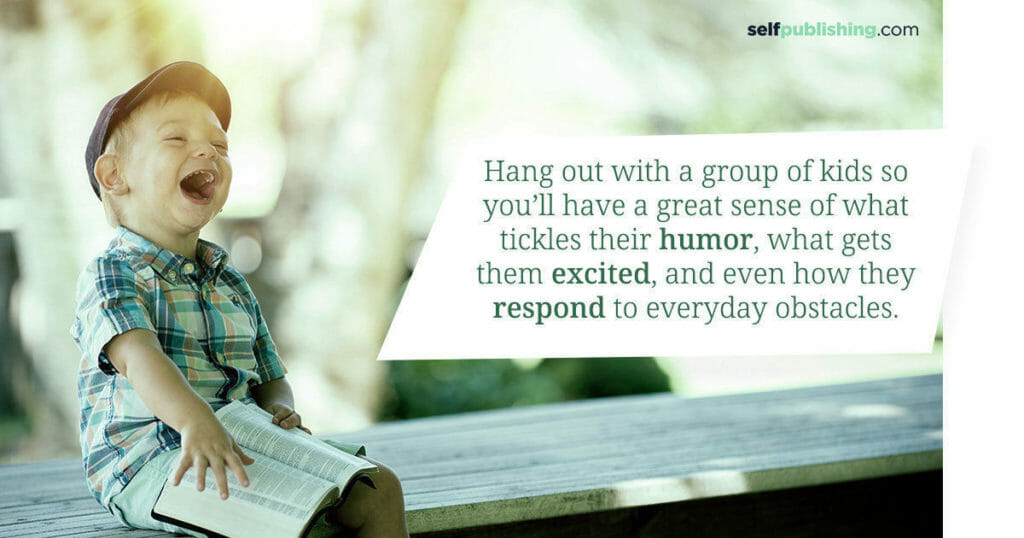
Hang out with a group of kids long enough and you’ll not only have a long list of new book ideas, but a really great sense of what tickles their humor, what gets them excited, and even how they respond to everyday obstacles.
This will inform and strengthen any book you write.
Step 3: Come up with a good idea to write about
What makes a children’s book idea good? Children’s books can be silly, deep, inspiring, hilarious, zany, serious, and straight up weird. They can make you laugh, cry, gasp, squeal, giggle and guffaw.
But just being silly, zany, deep, or inspiring is not enough to make a book great, let alone good.
Drive your story with an unforgettable, relatable character or an emotionally-charged plot that keeps kids on the edge of their seat, and you’ll have an above-par book that kids love to read over and over.
Decide if you want to learn how to write a children’s picture book or if you are aiming for more of a chapter book.
Where do these good ideas come from?
Be an observer and you’ll find ideas everywhere! Record them so you don’t forget them. I have a list of hundreds of book ideas. Most of them are rubbish. At least four of them have become best-selling books that kids and their adults read regularly. You never know what gems will pop up when idea-spiration hits.
Here are some popular children’s book themes to get you started:
- Friendship – Making friends, resolving conflicts, supporting others
- Family – Relationships with parents, siblings, grandparents
- Courage/Bravery – Overcoming fear, trying something new
- Kindness/Empathy – Helping others, understanding feelings
- Honesty & Integrity – Telling the truth, doing the right thing
- Self-Acceptance/Confidence – Being proud of who you are
- Grief/Loss – Understanding and processing emotions
- Curiosity/Discovery – Exploring new places or ideas
- Imagination/Creativity – Using fantasy, pretend play, or storytelling
- Problem-Solving – Facing and overcoming challenges
- Growth Mindset – Learning from mistakes, perseverance
- Learning New Skills – Trying something for the first time (biking, school, etc.)
- Fairness/Justice – Understanding equality, standing up for others
- Responsibility – Taking care of pets, chores, or promises
- Sharing/Cooperation – Working or playing well with others
- Respect for Others – Differences in people, cultures, or abilities
- Magic and Wonder – Fairies, dragons, witches, talking animals
- Adventure – Quests, treasure hunts, secret worlds
- Time Travel/Space – Exploring past, future, or outer space
- Animal or Toy Perspective – Stories told through non-human characters
- Starting School – First day jitters, new routines
- Moving to a New Place – Change, adjustment, making new friends
- Environmental Awareness – Nature, recycling, protecting animals
- Bullying & Inclusion – Recognizing and standing up to unkindness
Here are some places to find ideas for a children’s book:
- Fractured fairy tales: Take a commonly known myth or legend and retell it in a new and creative way. Think “The True Story of the Three Little Pigs” (as told by the wolf), Goldilocks and the Three Dinosaurs, or my very own book, Tercules. I took the legend of Hercules, combined him with a wild turkey chick, and voila.
- Unlikely characters and settings: Speaking of Tercules, another great place to get ideas is by throwing together two very unlikely characters and dropping them in an unlikely setting. Shark versus Train is a great example of this.
- Putting characters in child-like settings and circumstances: Some book ideas are life skills we want to teach our kids in creative ways. The Princess and the Potty worked magic with my daughter. Or Is Your Buffalo Ready for Kindergarten?, illustrated by my acquaintance, Daniel. Taking a unique character and putting them in the position of a child will help kids catch all sorts of great life skills. Or on a more serious note, my own Speranza’s Sweater: A Child’s Journey Through Foster Care and Adoption, gives children permission to experience the many conflicting feelings of adoption through the lens of Speranza. Jed Jurchenko also does this with his recent release, The Stormy Secret, helping kids navigate the safe places to share secrets imposed on them.
Step 4: Write with children in mind
Everything about your book: your story idea, book layout, page count, number of illustrations, and depth of the plot depend on who you are writing for.
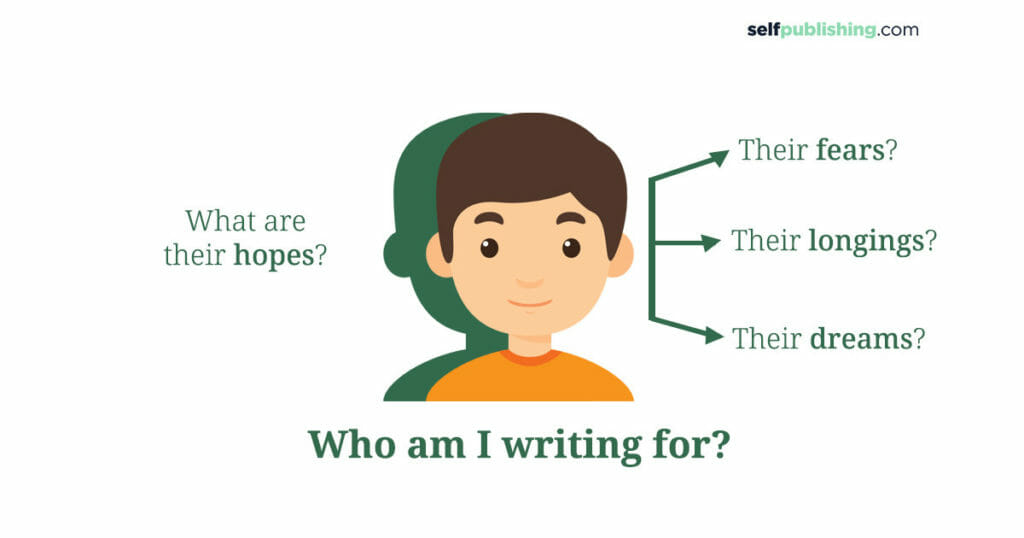
If you’re learning how to write a children’s book, then your target audience is…well, children, right?
While this is true, if you target your book at every child, you’re actually writing for no child.
Kids won’t see themselves represented in a book that’s for everyone. A book that focuses on a particular group of kids will not only strike a chord with that group, but you’ll find other kids love it as well.
Having a focus actually expands your book’s influence! This is true for any literature you write. Additionally, a picture book is most often read aloud by an adult, so they as the adult-reader and purchaser are part of your target audience as well.
So how do you determine your target audience? Go back to the reason you’re writing for children. Is it to communicate a particular value? Is it to make your grandchildren proud of you? Is it to teach kids their colors or letters? Is it to make money as an author? Know your deep, heart-reason for why you want to write for kids.
When you understand why you’re writing, think about who you are most likely to impact with your passion.
For example, much of my writing (for adults or for children) is about removing shame, restoring dignity, helping people to feel seen and valued. My target audience, then, are children who are internally questioning if they’re as “good” or “worthy” as the other kids around them. They feel insecure and inadequate. They feel different and small. They feel “too much” or “not enough.” They’re the precious under-dog. They are me when I was a kid.
Use these questions to help you write for your target audience:
- Who are you writing for? Write your book for them, and don’t try to write for everyone.
- Who is this book for? Spend time with those kids. Spend time with those adults. Get to know them.
- Who are they on a deeper level? What are their hopes? Their fears? Their longings? Their questions? Their dreams?
Write your book for your target readers. While other kids will read it and love it too, don’t miss this opportunity to know why you’re writing and to whom your writing. This is what writers of quality books do.
Deciding the age group you will write for will have a huge impact on the reading level and word count. Here is a quick reference table of how many words you should use for each age group.
| Age Group | Book Type | Words/Page | Total Word Count |
|---|---|---|---|
| 0–2 years | Board Books | 0–25 | 0–300 |
| 3–5 years | Picture Books | 20–50 | 200–1,000 |
| 5–7 years | Early Readers | 30–60 | 500–2,000 |
| 6–9 years | Chapter Books | 50–100 | 3,000–10,000 |
| 8–12 years | Middle Grade | 100–300 | 20,000–50,000 |
Step 5: Mind map your children’s book
When learning how to write a children’s book, mind mapping is a powerful prewriting tool that helps organize thoughts visually, making it especially useful when planning a children’s book. At its core, a mind map starts with a central idea—such as the book’s theme, character, or message—and branches out into related concepts like plot points, setting, character traits, and emotional beats. This process helps you see the big picture and how different elements connect, which is essential when crafting a story that needs to be both engaging and developmentally appropriate for young readers.
Children’s books, especially picture books or early readers, demand clarity, simplicity, and emotional resonance. With limited word counts and short attention spans to consider, every line, character, and plot point must serve a purpose. A mind map allows you to explore various directions the story could take, experiment with character arcs, or develop themes like kindness, bravery, or curiosity—all while keeping the intended age group in mind. It also prevents you from getting stuck or overwhelmed, as the visual layout offers a clear structure to follow or modify.
Furthermore, mind mapping can reveal gaps in the story or opportunities to deepen it. For example, if you’re writing a story about a lost kitten trying to find its way home, your mind map might branch out into settings (a city park, a rainy alley), encounters (a helpful dog, a street musician), and emotional milestones (fear, hope, relief). This method helps you create a coherent narrative path without rigidly outlining it—preserving creative flexibility while ensuring the story remains grounded and purposeful.
Step 6: Develop your children’s book characters
Speaking of characters who hold a story together, quality writers often employ a memorable main character.
When you’re learning how to write a children’s book, it’s important to focus on developing unforgettable characters.
Related: Character Bio Template
Think Fancy Nancy or Olivia or Ferdinand or the Gruffalo or Peter Rabbit. If you’ve been around kid-lit long enough, these names immediately bring a personality, a distinction, and a story to mind.
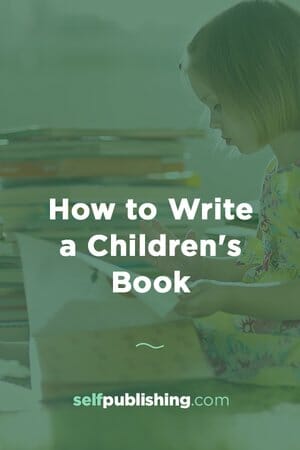
Develop unforgettable characters…
Well-developed characters bring the quality of a book to the next level. The central character should be unforgettable, like the hungry, hungry caterpillar.
Tips for developing children’s book characters:
- Your readers should care about your central character by the end of the book, like we care for Piggy and Gerald by the end of any Elephant and Piggy book by Mo Willems.
- Characters should become your reader’s special friends, like Winnie the Pooh, Wilbur, or Ramona probably were for you.
- Characters should have distinct personalities that set them apart from other characters. They should be believable as they encounter obstacles in your story. They are flawed (aren’t we all?) and yet overcome a great many challenges (just like we do!). Think of each distinct character in Willy Wonka and the Chocolate Factory, the Chronicles of Narnia, or Charlotte’s Web.
- Characters should be relatable to your reader, however they’re depicted. Your central character can be an animal, a child, an object, even an old man… so long as they depict a child-like quality. We call this Anthropomorphism: assigning human traits to a non-human. Here are some examples of books that use each of these types of characters with child-like relatability.
- Is Your Buffalo Ready for Kindergarten by Audrey Vernick, Marathon Mouse by Amy Dixon, the Berenstain Bears books, and the “How Do Dinosaurs” series by Jane Yolen all utilize the personification of animals as central characters. The use of animals can help children generalize behavior and values without getting hung up on whether or not the main character shares their ethnicity or abilities.
- Cora Cooks Pancit by Dorina Lazo Gilmore and my own Weirdo and Willy are good examples of books that use a child as a central character.
- Thomas the Tank Engine by Reverend W. Awdry, The Day the Crayons Quit by Drew Daywalt and Oliver Jeffers, and The Bad Seed by Jory John and Pete Oswald all exemplify the use of objects with relatable qualities.
- A Sick Day for Amos McGee by Philip C. and Erin E. Stead and The Little Old Lady Who Was Not Afraid of Anything by Linda D. Williams are wonderful examples of a book using older people to represent a child-like trait or ability. This approach is shied away from the traditional industry, so you won’t find many of them. But when they’re done well, they’re incredible.
All of these books and characters immediately elicit a memory and a smile. Books that readers love have good, strong, memorable lead characters.
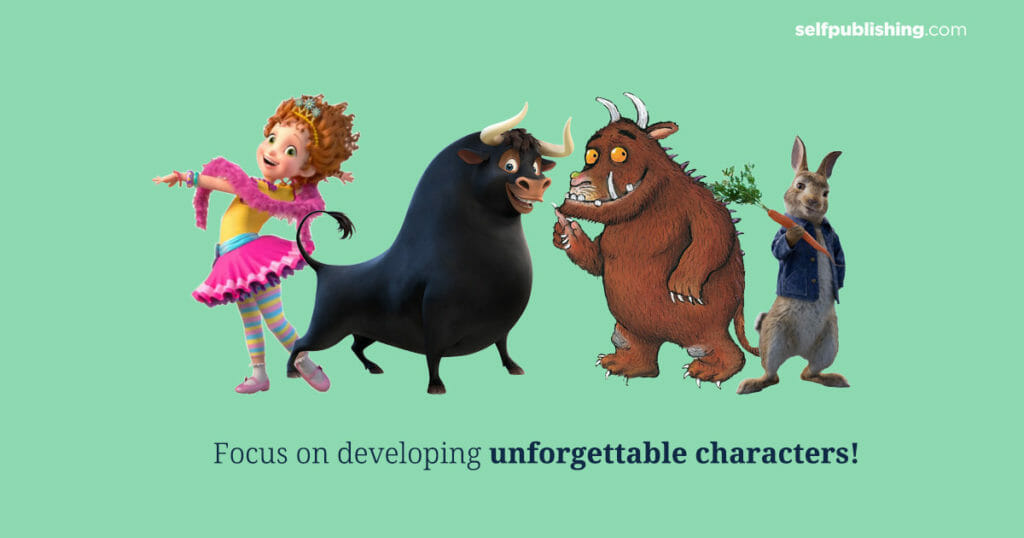
Step 7: Develop your writing craft
Writing for children is a form of art. It’s not something we should be flippant or careless about.
We want to be good stewards of the influence we have with children through literature. They are our future! It’s our responsibility to be the best we can be as we encourage them to be people who work toward a better world. This means we need to learn how to write well.
Quality picture book authors spend time learning. They attend conferences, workshops, participate in critique groups, read a ton, and take writing classes. They are sponges for strategies, tools, and personal feedback. They want to grow and improve.
Here are specific examples of developing your craft to write a children’s book:
- If you choose to write a book in rhyme, take the time to master meter, rhythm, and actual rhyming words or spare children of poorly written poetry and write in prose. Rhyming and alliteration can really help with young mind reading retention.
- If you’re working with a suspenseful plot, commit to a book outline to make it well-structured, logical, with important values, and a timeless quality. Dedicate yourself to the best use of language and storytelling.
- If you’re driving the story with an unforgettable character, be devoted to consistency, believability, voice, and the transformation of their character.
All quality children’s book writers work to improve their craft. You should, too! Opportunities to grow as a children’s writer exist on Udemy, Self Publishing School, Master Class, local colleges / universities, and organizations like the Society of Children’s Book Writers and Illustrators.
If you’re interested in taking some online courses to learn how to write a children’s book or learn about kid-lit topics, check out these resources:
- Self-Publishing School
- Taralazar.com
- Children’s Book Academy with Mira Reisburg
- or any of these 100 options provided by KidLit441
Related: Self-Publishing Courses
Step 8: Infuse a “Read it again!” quality
Finally, what makes readers love your book? It has that “Read it again!” feature. You know the one. It’s bedtime, you’re tired, they’re tired, and still they beg you to read it again. And honestly, you love it so much, you read it again.
Not only does it feel good to be their read-again book of choice, but when you write a book at this level, you’re actually supporting their brain development!
Studies have shown that repetition promotes healthy cognitive skill development. Writing a book they want to read over and over not only infuses them with the values you’ve encoded into the story, but supports their language development, memory, critical thinking, ability to analyze information, and social skill development. What we do is powerful. So let’s do it well.
Writing for children isn’t just about entertainment. We influence lives today for a healthier, more peaceful, more compassionate tomorrow. Think of the books that influenced you growing up. How they might still influence you. The books that carried you through hard times. The stories you just couldn’t put down or let go.
When you write for children, you are changing the world today and tomorrow. Thank you for not taking that responsibility lightly by doing your research on how to write a children’s book that kids (and their adults) will love.
If you want to follow a proven self-publishing framework with one-on-one coaching by a bestselling author, consider a self-publishing course!

























